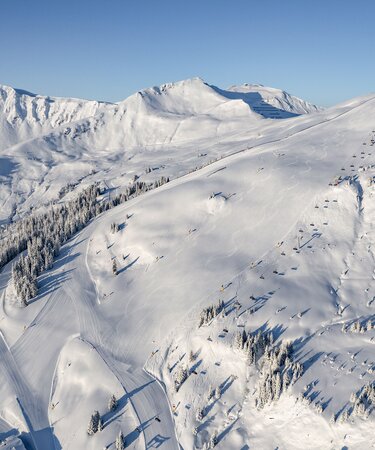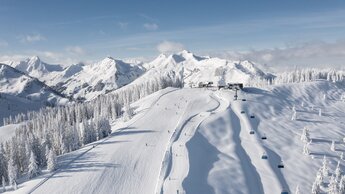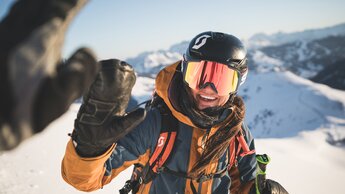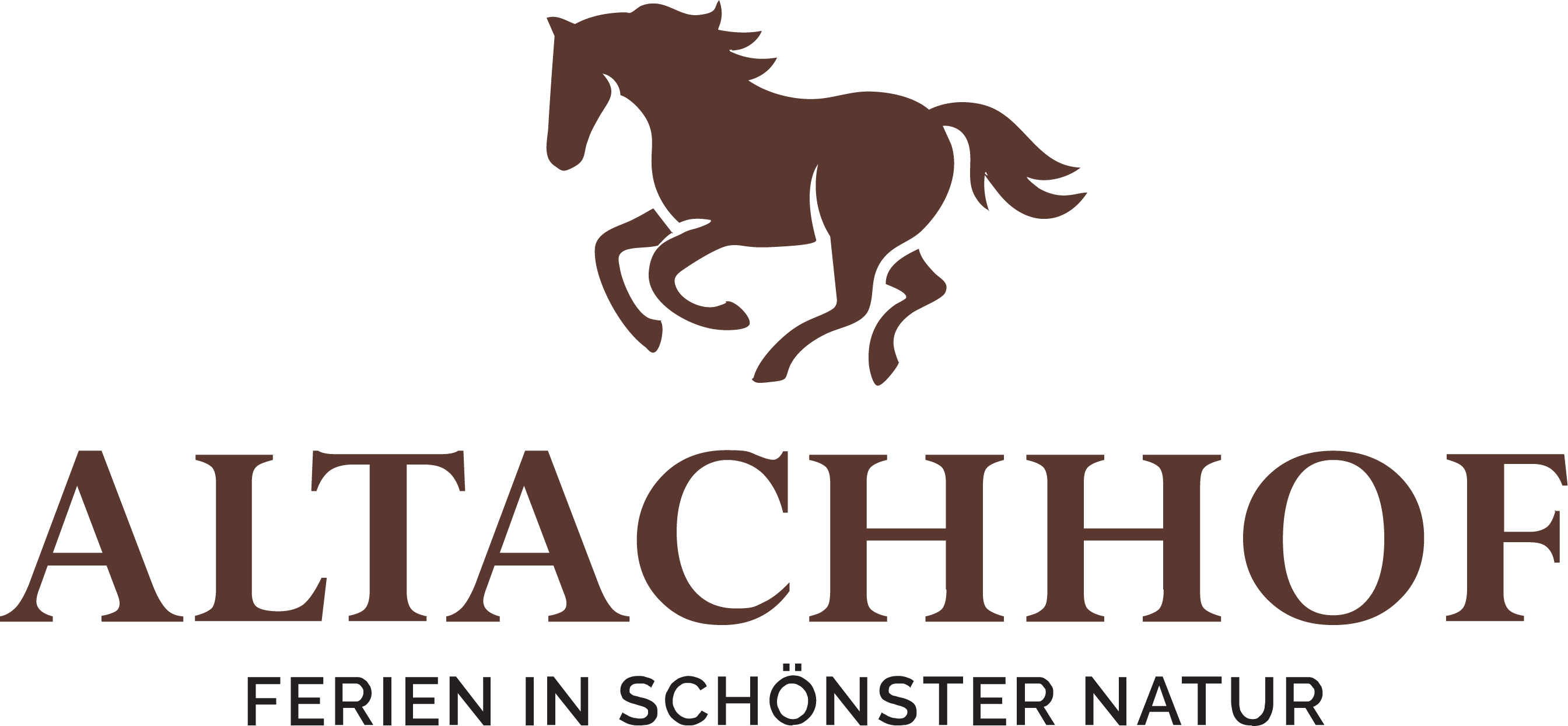
Information

Slope Closure
Slope Closure & Notice for Ski Tourers
We kindly ask you to take note of the following information regarding slope closures:
All ski slopes (except of course the floodlit slope) in Saalbach Hinterglemm are, according to local police regulations, closed from 5:00 p.m. to 8:30 a.m. – we would like to once again point out the dangers posed by our cable winch grooming with snowcats after operating hours!
NOTICE for ski tourers:
Please note that starting this year, there is an EXCEPTION. The Viehhofen run No. 68 in the Viehhofen area is only closed from 9:00 p.m. to 8:30 a.m.! Ski tourers can therefore use this slope for training purposes until 9:00 p.m.
The Altachhof house run is our private slope; however, we also ask for EXTRA ATTENTION between 11:00 a.m. and 12:30 p.m. and between 3:00 p.m. and 4:00 p.m., as we groom the slope and our staff make deliveries during these times.
You are welcome to have the lighting for the house run switched on by Nicole.

Ski Helmet Obligation
Minors up to the age of 15 must wear a commercially available winter sports helmet when skiing on slopes as part of winter sports activities.
Guardians and supervisors are responsible for ensuring compliance with this obligation within the scope of their abilities.
Head protection must also be worn when using other winter sports equipment such as skibobs or sleds on groomed slopes.
The helmet requirement applies only in the following provinces: Salzburg, Upper Austria, Styria, Lower Austria, Carinthia, Burgenland, and Vienna.
In the provinces of Tyrol and Vorarlberg, there is currently no legal regulation. In Vorarlberg, a public recommendation for wearing ski helmets has been issued.
Helmet controls are not provided for by law. There will also be no penalty for guardians if the child does not wear a helmet. The goal is simply to raise awareness of how dangerous skiing or snowboarding without a helmet can be for children.
However, in the event of a violation of the helmet obligation, insurance problems may arise in the event of an accident, and the insurance company may refuse to cover the accident costs.
It is definitely advisable to equip your children with a helmet (available for free or at low cost from all ski rentals and ski schools), as most ski accidents result in serious head injuries – wearing a helmet can significantly reduce the risk.
Vignette Requirement on Motorways and Expressways
In Austria, since 1997, a toll has been mandatory on all motorways and expressways.
For motorcycles and vehicles under 3.5 tons, a motorway vignette is required, available as a 10-day, 2-month, or annual vignette.
The vignette must be affixed to the vehicle before using toll roads.
The vignette requirement begins at the Austrian border, not only at the first motorway entrance.
The section of the A12 Inntal Motorway between the Kiefersfelden border crossing and the Kufstein-Süd exit is often described as toll-free. However, it is subject to toll, even though enforcement of the vignette requirement is currently suspended until further notice (info from ASFINAG).
In Austria, vignettes can be purchased at most gas stations, tobacconists, and motorists’ clubs near motorways. Abroad, they can be bought at gas stations near the Austrian border.
Before entering a toll road, the vignette must be properly affixed from the inside to the windshield, so it is clearly visible and checkable from the outside.
Vignette checks are carried out not only visually, but also automatically using mobile camera systems.
If the vignette is missing or not properly affixed, a fine of €120.00 must be paid. If the vignette is manipulated, €240.00 will be charged. If these amounts are not paid, administrative fines between €300.00 and €3,000.00 will be imposed.
The toll regulations can be found on the ASFINAG website.
Speed Limits
Maximum speeds (if not indicated otherwise by traffic signs):
Cars and motorcycles:
- In built-up areas (between town signs): 50 km/h
- On rural roads and expressways: 100 km/h
- On motorways: 130 km/h
Motorhomes up to 3,500 kg:
- In built-up areas: 50 km/h
- On rural roads and expressways: 100 km/h
- On motorways: 130 km/h
Cars with light trailers (up to 750 kg) – towing vehicle with a maximum permissible total weight of up to 3.5 t:
- In built-up areas: 50 km/h
- On motorways, expressways, and rural roads: 100 km/h
Cars with trailers over 750 kg (combined weight of towing vehicle and trailer up to 3.5 t max permissible total weight):
- In built-up areas: 50 km/h
- On rural roads and expressways: 80 km/h
- On motorways: 100 km/h
Buses:
- In built-up areas: 50 km/h
- On rural roads and expressways: 80 km/h
- On motorways: 100 km/h (between 10:00 p.m. and 5:00 a.m., only 90 km/h on certain motorways)
Forming an Emergency Corridor
Since January 2012, an emergency corridor must be formed in advance on Austria’s motorways and expressways.
Rule: In case of traffic congestion – form an emergency corridor!
Advantages of the emergency corridor are clear:
- Clear and simple rules of conduct
- Rapid access and arrival of emergency services
- Wide access route
- Up to four minutes time gain – increases survival chances by 40%
- Fast medical care for injured persons
- No obstruction by broken-down vehicles on the hard shoulder
- Unified procedure with neighboring countries Germany, Slovenia, Switzerland
In case of slow-moving traffic – form an emergency corridor
Proactively, when traffic slows down, all vehicles in the far left lane must move as far left as possible, and all others as far right as necessary, leaving a free lane in between. The hard shoulder may also be used. Vehicles must align parallel to the road, since diagonally positioned vehicles cause further obstructions and impede one's own progress in the traffic jam.
When?
As soon as traffic slows down and a traffic jam is likely, all road users must keep the way clear for emergency services – regardless of whether you are on a two-lane or multi-lane motorway or expressway. Ambulance, fire brigade, and police must be able to pass without hindrance in case of emergency.
How?
All vehicles in the left lane move as far left as possible and position themselves parallel to the road at the edge. All others move as far right as possible, including onto the hard shoulder if necessary.
Winter Tire Obligation
From November 1 to April 15, cars may only be operated under wintry road conditions if winter tires are mounted on all four wheels or snow chains on at least two drive wheels.
Snow chains are only permitted if the road is entirely or nearly entirely covered with snow or ice.
Drinking and Driving
Blood alcohol limit: 0.5‰ (per mille)!
If this limit is exceeded, fines will be imposed; under certain circumstances, driving licenses may be revoked.
